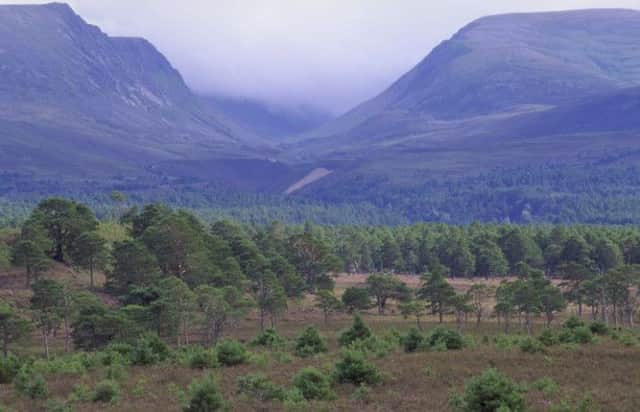Exploring Rothiemurchus’ by bike
This article contains affiliate links. We may earn a small commission on items purchased through this article, but that does not affect our editorial judgement.


Rothiemurchus sits snugly along the B970, a gorgeous road that technically ends at Coylumbridge but that actually continues east past the glittering shores of Loch Morlich and up to the peak of Cairngorm itself. The Grants have been stewards of Rothiemurchus for more than 400 years, and by their stewardship they have managed to keep the estate much as it was in the distant past. Today, Rothiemurchus has just enough visitor infrastructure, in the way of trails and shops, to enhance the experience without impinging on it.
Sarah and I spent our first full day in Nethy Bridge by taking the short (and stunning) drive down to Rothiemurchus where we stopped at Bothy Bikes to rent a couple of mountain bikes. The bikes seemed simple and yet highly advanced at the same time. For £18 each, we got multi-speed mountain bikes with hydraulic brakes and bike helmets for half a day. There are marked trails of various difficulties throughout Rothiemurchus, and we settled on a rather pedestrian one since both of us were a bit rusty. I failed to bring proper riding attire to Scotland so I’ve omitted all the hideously damning pictures of me on the bike.
Advertisement
Hide AdAdvertisement
Hide AdWaterproof map in hand, we set out from the bike shop and immediately took a wrong turn, though we didn’t realise it until later. This would become a trend. Nevertheless we found the signs pointing toward Loch An Eilein, a pretty lake in the middle of the forest with a small, ruined castle, and passed the Old Manse en route to a small gift shop on the edge of the loch. A well-groomed trail studded with pine needles began there, and we set off through the thick pine forest, dodging walkers and riding over hills. Clouds scudded past the sun and intermittently sent glowing rays through the coniferous canopy.
After some hair-raising descents we encountered a triple fork in the path, and, after careful scrutiny of our map, we promptly took the wrong prong. The plan was to continue biking east before looping back and instead we found ourselves circling the pretty Loch An Eilein. It wasn’t a waste. The trail hugs the loch for nearly its entire circumference and occasionally we’d spot ancient stone monuments, tumble-down castles, and wild fowl. Upon returning to the gift shop with aching bottoms, we decided to man up and take the correct turn this time.
We struck north and abruptly left the woody environs of Loch An Eilein. This part of the estate opens wide onto mountain heath, and the trail became much rougher and difficult to traverse. Our sore butts were in trouble. Snow-draped mountain peaks loomed in the distance and the sun beat down through the cool May air. At Coylumbridge we turned east back to the heart of Rothiemurchus so we could return our bikes before a sudden rain storm broke. Sarah was in top form during the ride spitting comedic one-liners that would earn me a torturous death if I shared them here.
While we spent the day biking around Rothiemurchus, many other activities like hiking, fishing, trap shooting, and four-wheeling are available. This part of Scotland, just southwest of Speyside and hugging the western edge of the Cairngorms National Park, should not be missed. A day roaming Rothiemurchus is the epitome of a visit to Scotland. If it’s a choice between Aviemore and Rothiemurchus, I’d choose Rothiemurchus every time.
• This article was originally published on the Travelling Savage website